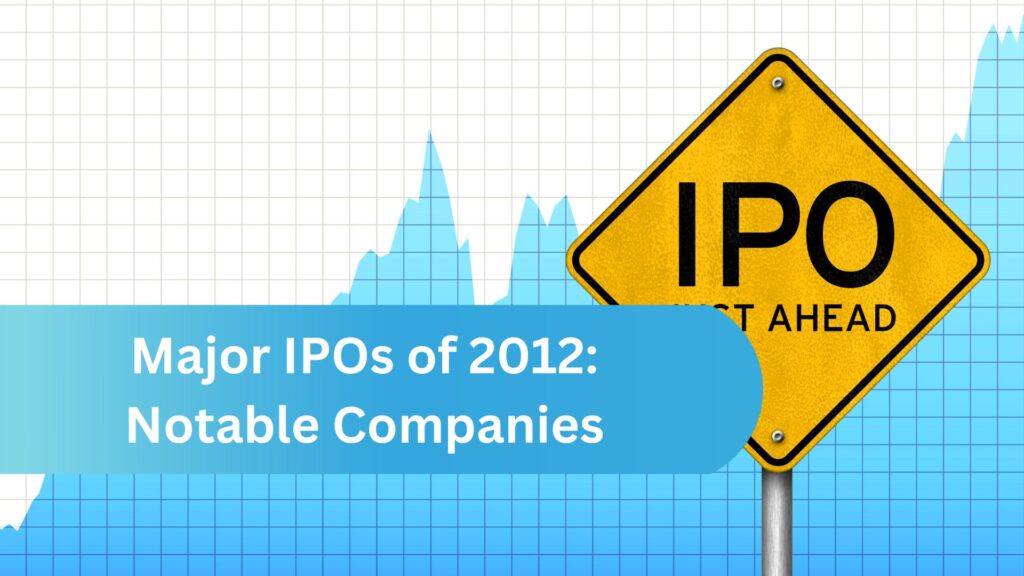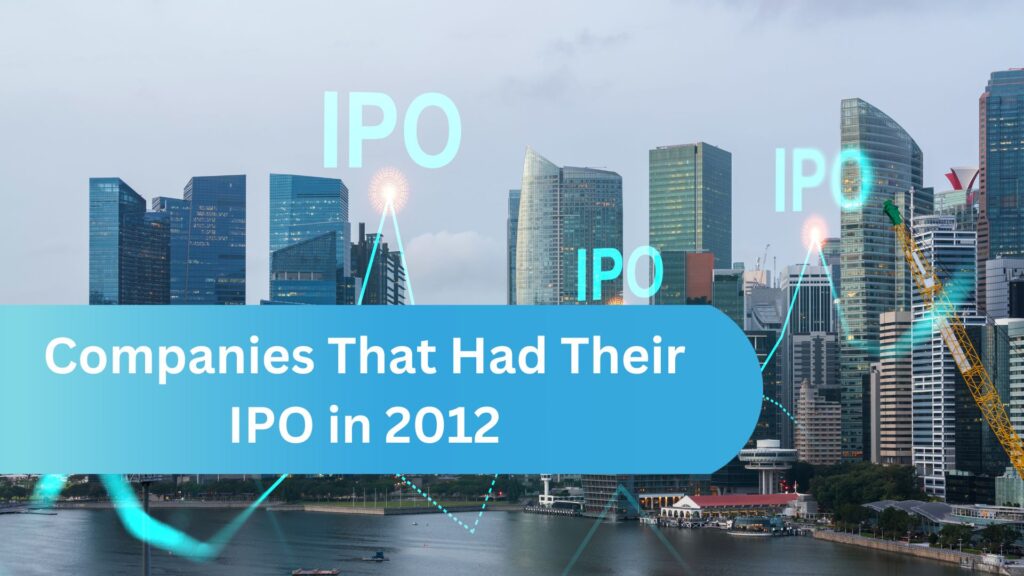The year 2012 stands out in IPO history as a year of bold bets, transformative technology companies going public, and market-sentiment shifts toward cloud computing, cybersecurity, and data analytics. While not as frenzied as the late-1990s dot-com boom, the 2012 IPO wave delivered some major names — some that turned into huge winners, and others that struggled.
Find IPO’d companies and their reviews with WiseWorq.
In this article we’ll explore why 2012 was significant, highlight key companies that made their public debut that year, look at what their post-IPO performance reveals, and extract investor lessons from the cohort.
Why 2012 Was a Unique IPO Year?
Several factors contributed to the IPO surge in 2012:
-
Recovery from the Global Financial Crisis: Markets had stabilized after the 2008-2009 shock, and investor appetite for growth companies returned.
-
Rise of cloud and enterprise SaaS: Companies delivering software as a service (SaaS) were gaining traction and were seen as viable public market candidates.
-
Cybersecurity and big data attractiveness: As enterprises faced new threats and data exploded, firms in those sectors commanded investor attention.
-
Large “unicorns” preparing to go public: Some technology giants built up significant scale and turned to the public markets in 2012.
Because of these drivers, companies with credible business models in tech and software found favorable timing to IPO. That said, it was still a selective environment — not every IPO succeeded.
Major IPOs of 2012: Notable Companies & Quick Profiles

Below is a selected list of companies that debuted in 2012, along with key details and what makes their stories interesting.
| # | Company Name | Ticker | IPO Date | IPO Price (USD) | Sector | Key Highlights / Notes |
|---|---|---|---|---|---|---|
| 1 | Meta Platforms, Inc. (formerly Facebook) | META | May 18, 2012 | $38.00 | Social Media / Tech | One of the largest IPOs ever; early volatility but massive long-term success. |
| 2 | ServiceNow, Inc. | NOW | June 29, 2012 | $18.00 | SaaS / Cloud IT | Leading enterprise workflow automation platform; top performer from 2012 IPOs. |
| 3 | Workday, Inc. | WDAY | Oct 12, 2012 | $28.00 | Cloud / HR Software | Strong cloud-based HR and finance software; steady long-term growth. |
| 4 | Palo Alto Networks, Inc. | PANW | July 20, 2012 | $42.00 | Cybersecurity | Became a leader in enterprise and cloud security; major tech infrastructure IPO. |
| 5 | Splunk Inc. | SPLK | Apr 19, 2012 | $17.00 | Data Analytics / Software | Early mover in big data analytics; shows investment focus on data tools. |
| 6 | Guidewire Software, Inc. | GWRE | Jan 25, 2012 | $13.00 | Insurance Software | Offers cloud solutions for insurers; steady performer post-IPO. |
| 7 | ExactTarget, Inc. | ET | Mar 22, 2012 | $19.00 | Marketing Tech / SaaS | Later acquired by Salesforce; example of early SaaS IPO success. |
| 8 | Millennial Media, Inc. | MM | Mar 29, 2012 | $13.00 | Mobile Advertising | Early mobile ad platform; growth slowed post-IPO. |
| 9 | Kayak Software Corp. | KYAK | Jul 20, 2012 | $26.00 | Travel / Tech | Popular travel search engine; acquired by Booking Holdings. |
| 10 | WhiteWave Foods Co. | WWAV | Oct 25, 2012 | $17.00 | Food & Beverage | Known for plant-based brands; strong niche in healthier food trends. |
The Mixed Results: Winners and Underperformers
While the companies highlighted above mostly represent success stories, the 2012 IPO landscape was far from universally positive. Many issuers struggled to meet expectations, demonstrating that a high-profile debut does not guarantee long-term success. Some companies faced sharp declines in share price shortly after going public, while others failed to scale operations efficiently, run into cash flow issues, or encounter unexpected competition.
For example, companies in the mobile advertising space like Millennial Media, Inc. experienced early enthusiasm but ultimately saw slower growth and weaker returns compared to cloud-based SaaS peers. Similarly, consumer-focused IPOs that lacked differentiation or faced market saturation often underperformed, highlighting that strong fundamentals are as critical as timing or hype.
Key takeaway: A promising IPO year alone doesn’t ensure investor success. Business model viability, operational execution, competitive positioning, and market timing remain essential factors for long-term performance.
What We Learn Looking Back

Looking at the 2012 IPO cohort offers several valuable lessons for both investors and market observers:
-
Recurring revenue compounds over time.
SaaS-based companies like ServiceNow and Workday illustrate how subscription models provide predictable, growing cash flows that reward patient investors over several years. -
Timing matters, but category matters more.
Entering high-demand sectors—cloud computing, cybersecurity, and enterprise software—gave certain 2012 IPOs significant tailwinds. Even late-year listings like Workday succeeded because they operated in a strong growth theme. -
Scale and platform resilience can overcome early hurdles.
Meta (Facebook) struggled immediately post-IPO, facing technical glitches and overvaluation concerns. However, long-term platform control and strategic pivoting to mobile and ads monetization transformed its trajectory into one of the most successful tech stories of the decade. -
Sector diversity affects outcomes.
Not all sectors performed equally well. IPOs in niche industries or less trendy sectors often delivered modest returns, while tech, SaaS, and cybersecurity companies drove many of the standout successes. -
Public market scrutiny intensifies post-IPO.
Once a company is public, growth expectations and investor scrutiny increase. Missed targets, operational missteps, or revenue inconsistencies can quickly impact stock performance.
2012 IPOs: Metrics & Statistics Snapshot
-
Total IPOs: Approximately 165 companies went public in 2012.
-
Sector distribution: Technology, software, data analytics, and cybersecurity dominated the listings, reflecting the thematic growth areas of the period.
-
Returns spectrum: Some companies generated extraordinary long-term gains (hundreds to thousands of percent), rewarding patient investors. Others delivered disappointing or flat returns, underscoring the variability even within a strong IPO environment.
These statistics illustrate that success was concentrated among companies with strong business models, scalable operations, and growth-aligned sectors.
Implications for Current & Future Investors
The lessons from 2012 remain highly relevant for today’s IPO investors.
-
Due diligence is crucial.
Avoid following hype or momentum alone. Evaluate the business model, management quality, market positioning, and growth prospects before investing. -
Adopt a long-term perspective.
Many of the best-performing IPOs required years to realize their full potential. Patience and a focus on fundamentals often outperformed short-term speculation. -
Beware of initial volatility.
Even marquee IPOs like Meta experienced early turbulence. Understanding the underlying business can prevent reactive, emotionally-driven decisions. -
Sector cycles shift, but thematic investing endures.
Growth themes change over time. While 2012 favored cloud, SaaS, and cybersecurity, today’s investors must identify emerging sectors with durable tailwinds while applying the same principle of thematic alignment. -
Understand the spectrum of outcomes.
Not every IPO in a “hot year” will succeed. Some companies deliver exceptional returns, while others struggle or fail, reinforcing the importance of risk management and diversification.
Conclusion
The IPOs of 2012 demonstrate the duality of public offerings: some companies seized their moment and executed brilliantly, while others failed to meet market expectations. From household names like Meta and ServiceNow to specialized players such as Guidewire, outcomes varied widely, emphasizing that going public is only the start of a long, challenging journey.
For investors and market observers, the 2012 cohort provides a rich case study: success depends on timing, business model strength, execution excellence, and alignment with growth trends. Studying both the winners and underperformers from this year helps investors make more informed decisions and better assess future IPO opportunities.


